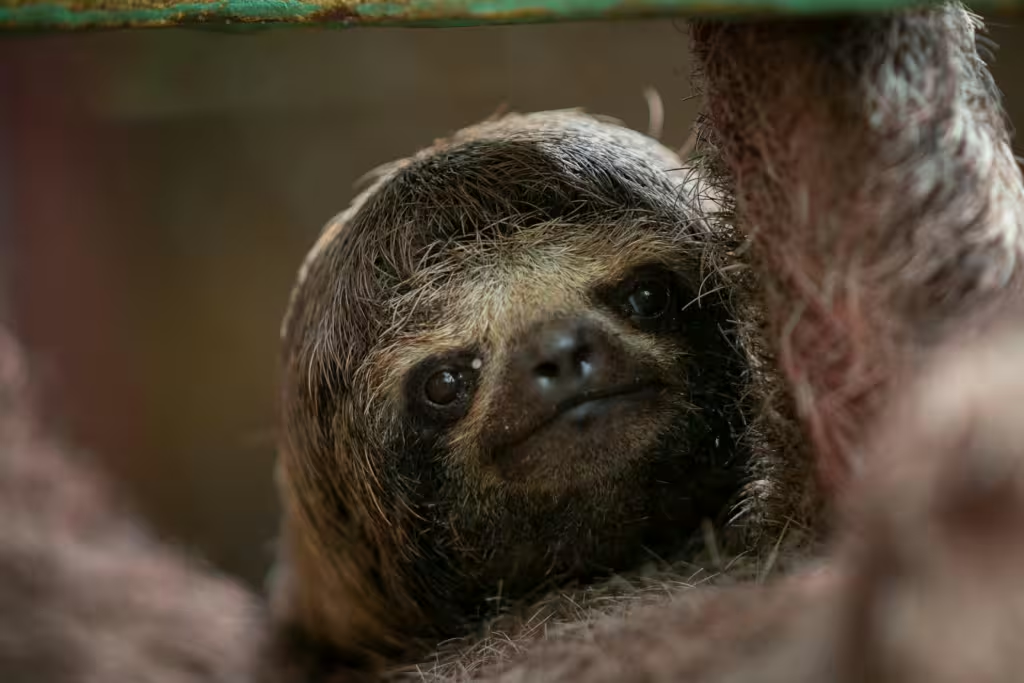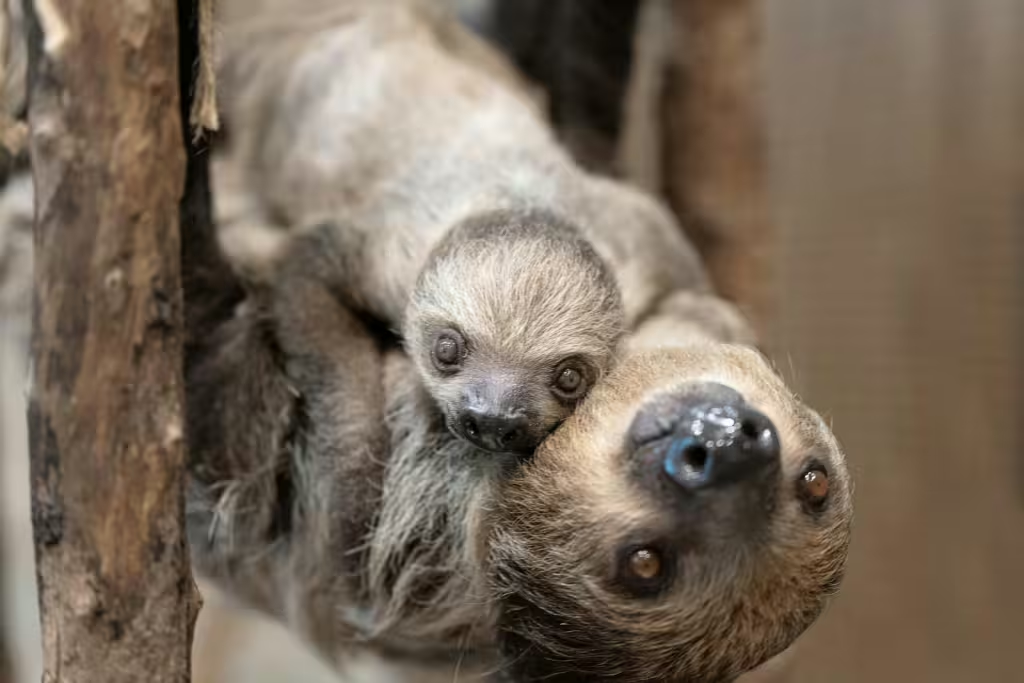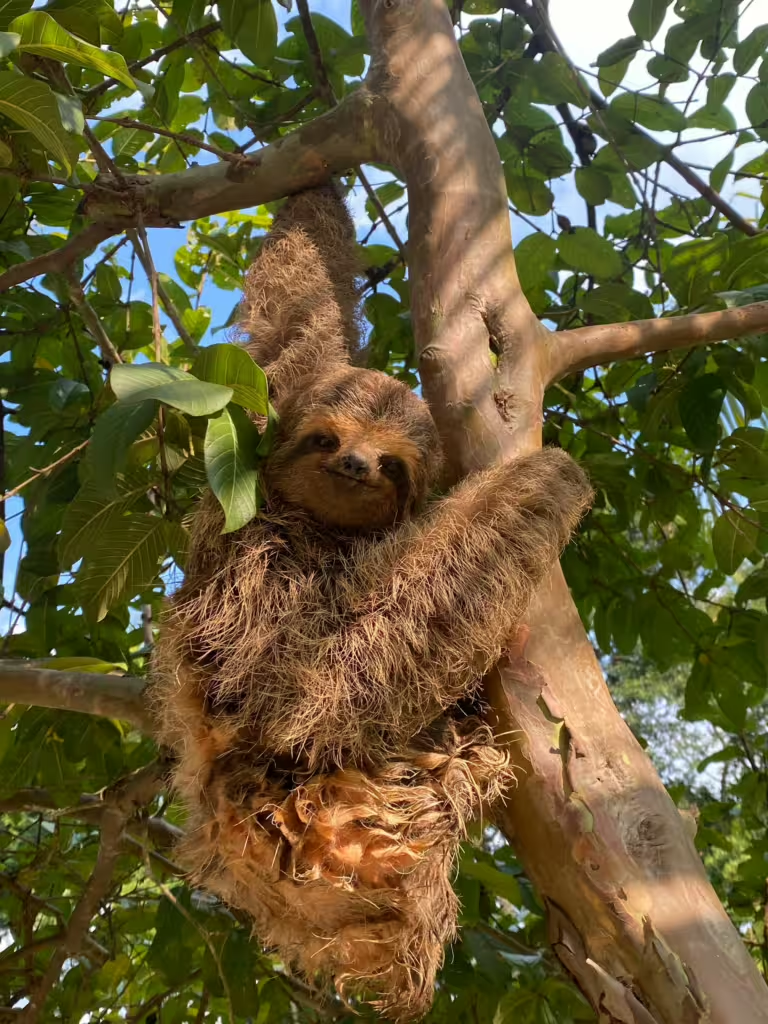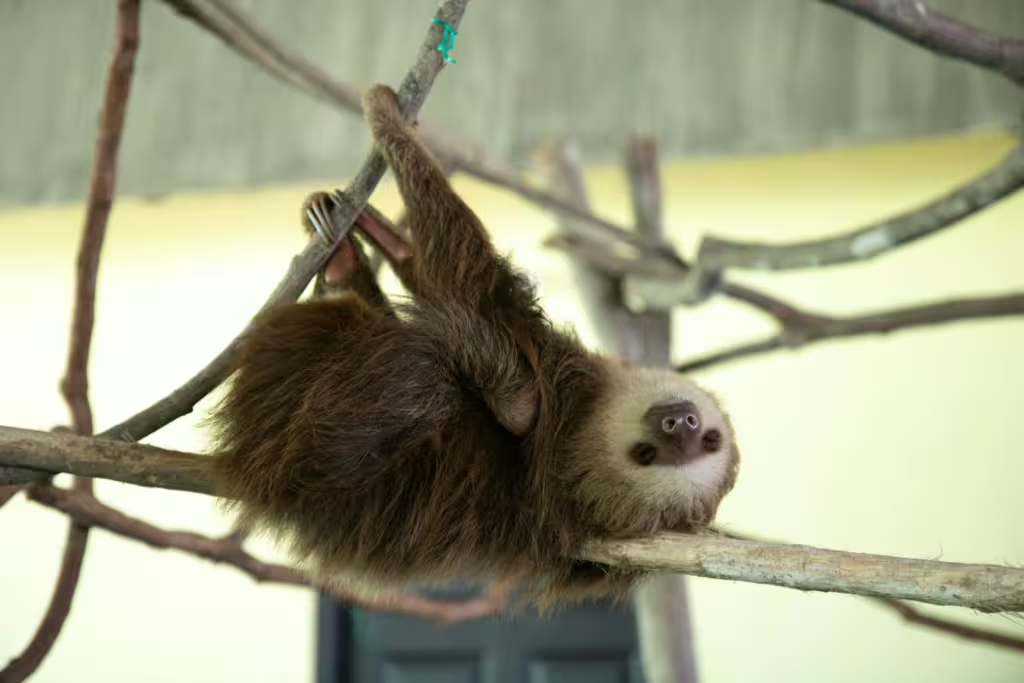Unique, unusual, and ugly-cute in a way that few other creatures are, the sloth has captured the imagination of humanity in a big way. Whether as a cartoonishly slow DMV worker or hilarious meme’s involving celebrity meet-and-greets, it’s safe to say that we are pretty obsessed with the these amazing animals. Sloths are possessed of slow movements, perpetual smiles, and remarkable adaptations that have surprised longtime fans and naturalists alike.
Over the past few centuries, sloths have become icons of relaxation and tranquility. Their many charming qualities notwithstanding, theirs is a fascinating story of survival, evolution, and ecological significance. Sloths are full of unique behaviors that few other animals evince, like hanging upside down and moving at a well…sloth’s pace in just about every aspect of their lives. At the same time, sloths face challenges that other animals do not. And while some of those challenges are just part of being a sloth, a lot of them have to do with their greatest fans; human beings.
In this article, we will discuss sloths in general. We will talk about their place in popular culture, their ecological function, adaptations, behavior, and finally, the dangers they face thanks to humanity. So sit back, relax, and prepare to read on; just be warned, we’re going to take it real slow on this one.
Sloths in Popular Culture
Over the years, sloths have cemented their place in popular culture as symbols of relaxation and laid-back living. This unhurried nature seemingly resonates a great deal in today’s fast-paced world. People who are already seeking a slower, more mindful lifestyle can relate to the perceived attitude that sloths possess. From children’s movies to viral internet memes, sloths have captured hearts all over the world.
Animated films like Disney’s bunny cop movie, Zootopia, feature sloths in humorous, though pretty appropriate roles. Who could resist the unimpeachable charisma of the unforgettable Flash, the DMV employee whose exaggerated slowness left moviegoers in stitches. Sloths are festooned on merchandise of all kinds, from T-shirts to coffee mugs emblazoned with slogans like “Live Slow, Die Whenever.”
When it comes to animals, however, there is a dark side to popularity. Certainly, reputation can and has raised awareness of these animals, but it has also led to a surge in the exotic pet trade. Like the slow loris, parrots, and even venomous snakes, sloths are often removed from their natural habitats to become somebody’s exotic companion animal. As a result, there is a great need for education about proper sloth care, as well as a reminder about the importance of preserving their ecosystems.
Nevertheless, the sloth’s symbolic association with mindfulness has inspired wellness campaigns and self-help initiatives that have actually helped a number of people dealing with their own stress, anxiety, or trauma. By highlighting the endearing nature of these animals, such campaigns are meant to remind people to embrace a slower, more intentional pace of life.
Ecological Importance of Sloths

Sloths are vital components of many tropical ecosystems in their native Central and South America homes. Arboreal mammals that spend most of their lives in the forest canopy, the sloth’s role in maintaining these ecosystems cannot be overstated:
Algae and Sloth Fur: Sloths are not just part of their ecosystem, they are actually an ecosystem all their own. Sloth fur hosts a unique type of algae, it’s what gives them their distinctive greenish coloration. This verdigris doesn’t just provide the sloths with excellent camouflage against predators, it actually helps out other animals that live within the algae itself! Crazy as it may sound, there are host of teensy weensy microorganisms that live exclusively in sloth fur, including a unique species of moth that feeds almost exclusively on sloth dung. These creatures are appropriately known as “Sloth Moths” and recent studies suggest that the insects play a pivotal role in fertilizing the algae. This is a sort of three-way symbiotic relationship that benefits the sloth, the moth, and the algae itself, showcasing the complex interconnectivity of nature.
Nutrient Cycling: You probably assumed, as a sane person, that sloths don’t defecate while hanging upside down. You would be right to think this, because they do not. At the same time, they don’t just turn vertical and poop from a lofty squat in the canopy. No, sloths descend their arboreal homes to relieve themselves. They do this, approximately once a week and the very act of doing so plays a crucial role in nutrient cycling. Sloth feces are full of compounds that fertilize the soil, supporting plant growth and indirectly benefiting other forest flora and fauna. This might seem like a mundane act, especially for us humans, but nutrient cycling is vital for maintaining the health of the forest ecosystems. The idea that dung is so important to so many, underscores the importance of even the smallest contributions in nature.
Seed Dispersal: In addition to leafy green and shoots, sloths like to eat a delicious fruit now and then. This fructivoricious act is quite also quite fortuitous to the forest, because by consuming fruits and excreting the seeds, sloths help in seed dispersal. Seed dispersers help to maintain plant diversity in their habitats, supporting the regeneration of tropical forests and ensuring that a variety of plant species can thrive and sustain other wildlife.
By supporting these vital processes, sloths contribute to the overall health and stability of their ecosystems. This is why the conservation of these and other jungle creatures has become so important in recent years. The conservation of these and so many other endangered forest creatures is something of priority for maintaining biodiversity and the health of forests the world over. Considering so many tropical forests aid in carbon sequestration and oxygen creation, it makes sense to keep all of their inhabitants safe.
Unique and Unusual Behavior
To say that sloths are unique is something of an understatement. Yet, all of their peculiar behaviors and adaptations have evolved in ways that help them survive in their sometimes challenging environments. Here are just a few of of the sloth’s most intriguing traits:
Algae in Their Fur
We touched on this earlier, but the algae that lives in a sloth’s fur is even more important to their survival than just acting as a camo coat for moths to breed in. Researchers speculate that sloths might actually ingest this algae while grooming. Like many hairy mammals, sloths do take time to groom their own fur. The algae they eat while doing so might grant them a small nutritional boost, while simultaneously allowing them to blend seamlessly into their leafy, treetop habitats. This makes the sloth/algae connection even more of symbiotic relationship than was previously indicated. And considering how reducing their visibility allows them to more easily escape predators such as harpy eagles and jaguars, this peculiar adaptation is absolutely vital to their continued survival.
Weekly Defecation Ritual
We have also touched briefly on the sloth’s um…bathroom habits. This weekly trip from the treetops to the ground probably sounds as if the sloth is not keeping regular, but there is a purpose to it beyond just getting the nutrients directly to the soil. That said, the bathroom behavior of sloths remains something of a mystery to scientists. There are theories, of course. Some experts suggest that this ritual might help them communicate with other sloths or else aid the growth of algae in their fur by fertilizing the base of their host trees. Either way you turn and twist, however, the descent itself is a risky endeavor. Coming out of the trees exposes sloths to predators, so there must be good reasons for them doing it; we suppose someone will figure it out some day.
Swimming Abilities
Sloths are pretty famous for their slow movements on land, but did you know they are actually talented swimmers? When it comes to sloth paddling, these normally tree-dwelling mammals are surprisingly agile in the water. The combination of long limbs and a dog-paddle technique help sloths move quite efficiently in water. Swimming is actually an essential survival skill for sloths because it allows them to cross rivers during rainy seasons and avoid predators. At the same time, their ability to navigate aquatic environments is a means of finding mates in different parts of the jungle, even of those parts have been separated by water. In this way, sloths become something of a textbook definition of, you can’t judge a book by its cover.

Mating Habits
Speaking of mates, sloths also have a unique ways of practicing romance. Though they don’t make many sounds, sloths are capable of loud vocalizations that are usually meant to attract other sloths. Mating calls can involve loud vocalizations by females to attract distant males, who have been known to travel considerable distances in order find the mellifluous female in question. Oddly enough, once the male sloth finds a partner, the act is surprisingly quick, lasting only a few seconds.
Gestation periods for sloths generally vary by species, but female sloths typically give birth to only a single offspring. This adorable baby sloth clings to its mother for months, forming a close bond that allows the slothling to learn essential survival skills from its mother. Unfortunately, the low reproductive rate of sloths makes them particularly vulnerable to population declines, which can and have happened because of habitat destruction and poaching. This just emphasizes the need for conservation efforts to protect these very unique animals.
Threats Sloths Face
Despite their surprising adaptability, sloths face numerous threats that endanger the continued survival of their six different species. Habitat destruction, climate change, and human activity are their biggest challenges and they exacerbate the problems the animals face simply because of their sedate natures:
Deforestation: Sloths depend on forests for food, shelter, and safety. These habitats are essential to many arboreal animals and the rapid clearing of rainforests for agriculture, logging, and urbanization has significantly reduced their habitats. Not only has this forced sloths into fragmented and less secure areas, it disrupts the food chain, down to the very algae on their fur.
Climate Change: Rising global temperatures and changing rainfall patterns have already disrupted the delicate balance of tropical ecosystems, and sloths are not immune. Such changes affect the availability of food and suitable habitats for sloths, as well as exacerbating other environmental stressors. Navigation of an ever-changing landscape is particularly difficult for animals whose pace often means they fall behind before they can escape the next unexpected deluge.
Road Accidents: As forests shrink and human settlements continue to overrun natural places, sloths are increasingly forced to cross roads to find food and other sloths. With their speed and reflexes, they are more vulnerable to vehicle collisions than most. Efforts to create wildlife corridors and install crossing structures have become an essential piece of mitigating this threat and protecting sloth populations.
Illegal Pet Trade: People love sloths so much that the demand for them as exotic pets has dealt a serious blow to their populations. This has led to the capture and mistreatment of many of these animals. What many people don’t realize is that removing sloths from the wild not only harms the individual animals themselves, it also disrupts their populations and ecosystems. The fact is, the people who love sloths so much are woefully uneducated about them; not just how to properly care for then, but how vital they are for their home ecosystems.
How to Help Sloths
Conservation efforts have become critical to ensuring the survival of sloths and their habitats. Many conservation organizatjons are working to spread awareness, adopt orphaned sloths, and preserve their habitats. As individuals, we can help by promoting and using sustainable products not made from logging, monoculture agriculture, or via habitat destruction. We can also learn to appreciate animals like the sloth from a distance, allowing them the time they need to do their good work for the environment.

True Investigator Says…
As you can see, sloths are more than just adorable internet sensations. These amazing creatures are ecological engineers that aid in the biodiversity and renewal of their forest homes, simply by being part of the food chain. If we love sloths so much, then we must continue to learn and understand all we can about them. So, the next time you see a sloth meme, remember the incredible journey that animal takes every day and remind yourself of their plight, their purpose, and the ecological significance behind that slow-moving, smiling face.
Discover more from TrueInvestigator
Subscribe to get the latest posts sent to your email.


